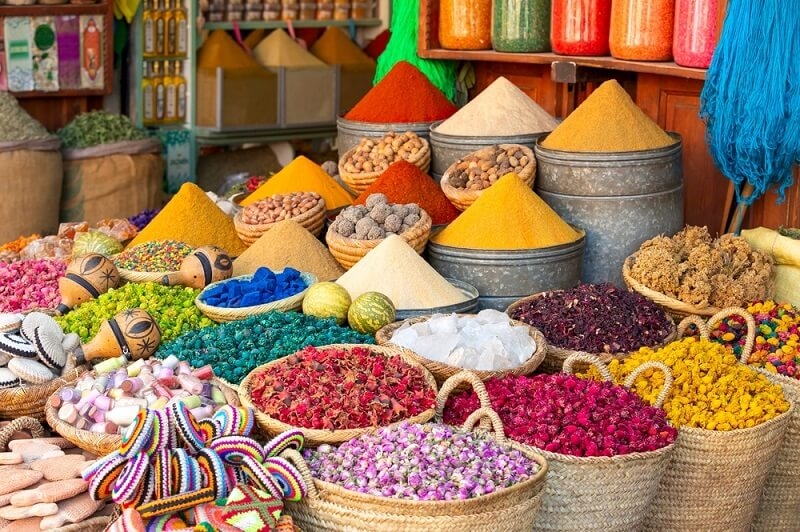
African cooking spices are a crucial ingredient in kitchens all over Africa, and everything from intense spice mixtures to fragrant herbs and spices can amplify everyday meals into extraordinary ones. Many home cooks want to know the best African spices for cooking and what it takes to put authentic flavors into their kitchens. It is even more worth the investment when you understand how to use the various berbere spices, different African seasoning blends, and African spice health benefits if you know how cooking with spice works, plus a few tricks to elevate a simple meal into a culinary creation.
Spices go beyond punching up flavors—they are integral to African history, culture, and health. African spices can be found in stews, soups, grilled meats, or even beverages, but they might also seem to add multiple complex layers of flavor.
By developing a command of using African cooking spices, you are tapping into centuries-old culture and tradition and bringing authenticity to your kitchen.
Now that we’ve considered some of the continent’s rich diversity in food, it is time to look at some of the best African spices for cooking. These spices also reflect culture and culinary history and have been loved for years for their unique flavor.
Spices you should consider trying:
As you can see, each of these spice blends has a story to tell, and they are an opportunity to explore the flavors of Africa while learning about cultural stories!

One of the most recognizable spice blends on the continent is berbere. By knowing how to incorporate berbere spice into your food, you can add warmth and depth to your dishes while respectfully practicing the traditions of Ethiopia.
Berbere demonstrates the intensity of spice flavors from Africa and shows how ordinary ingredients can be elevated to extraordinary culinary efforts.
In addition to single spices, African seasoning mixtures create the heart of many original recipes. These mixtures create the interplay between heat, sweetness, and earthiness.
These blends allow cooks to focus on their cooking and streamline operations, achieving the intense taste of traditional African dishes while maintaining consistent flavor representations.
Beyond flavor, many spices provide excellent wellness benefits. Learning about African spice health benefits explains why these ingredients have been widely used for thousands of years.
Historically, African cooking has linked food to health, making spices a necessary component of food and healing traditions.
Spices can elevate food, and it is essential to use them properly. Below are good tips for cooking with spices that any chef can use.
Hopefully, these tips will make using African cooking spices enjoyable while making your meals more flavorful and not overly spicy!
Northern Africa has a rich spice history influenced by trade routes connecting Africa to the Middle East and Europe. African seasoning blends like Ras el Hanout and Harissa embody this heritage.
The sweetness and spice make North African food uniquely comforting and aromatic.
Bold flavors characterize West Africa. The best African spices for cooking are focused on heat, peanuts, and earthy flavors.
West African food can also work to attain complexity and heat by using tips for cooking with spices.
The spice culture of East Africa is a reflection of the nature of the Indian Ocean trade routes. A tremendous amount of regional difference and profound culinary richness is unlocked by understanding berbere spice and other blends originating in the area.
These illustrations demonstrate how African cooking spices intimately combine heat, aroma, and nutrition to create everyday cooking.
In Southern Africa, herbs and spices can amalgamate local traditions with globally configured influences. African seasoning blends typically combine native plant herbs with spices acquired through global cultural exchange.
Thus, Southern African cuisine demonstrates the potential for versatility and shows how spices can create heritage and innovations.
Knowing which dishes they suit best is essential to fully appreciate African cooking spices.
Pairing correctly ensures balance and authenticity in flavor.
For home cooks, spices can seem intimidating. These easy hacks simplify their use:
With these simple practices, African-inspired meals become part of everyday cooking.
Spices carry cultural meaning beyond flavor. They are exchanged in trade, used in ceremonies, and even employed in traditional medicine. Learning about African spice health benefits connects you to this deeper history.
For example, berbere is a cooking staple and symbolizes Ethiopia’s culinary identity. Suya spice is part of Nigeria’s vibrant street food culture, and Ras el Hanout represents Morocco’s blending of trade and tradition.
African cooking spices are the foundation of the continent's flavor, history, and wellness. By exploring the best African spices for cooking, learning how to use berbere spice, experimenting with African seasoning blends, and appreciating African spice health benefits, you can elevate your meals with authenticity and depth. Applying simple tips for cooking with spices ensures you enjoy every dish to its fullest.
This content was created by AI